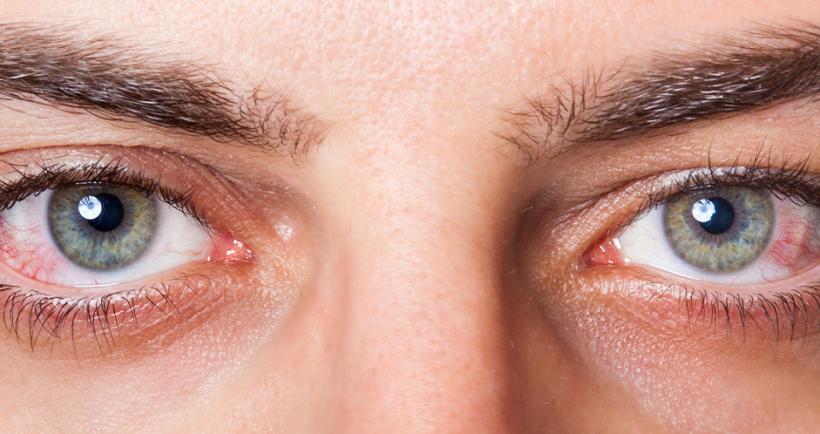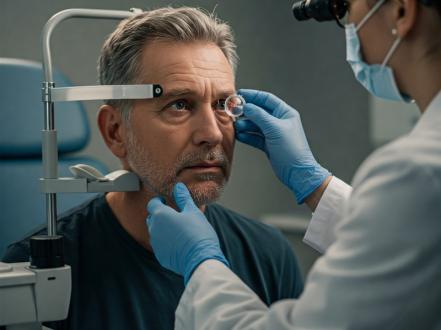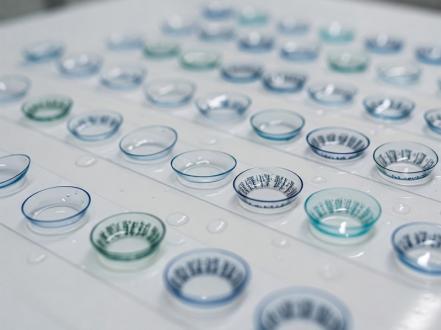Eye redness, or red eye syndrome, is the most common reason for visiting an ophthalmologist.
The underlying cause of red eyes is dilation of the blood vessels in the conjunctiva (the transparent film covering the eyeball), the sclera (the white part of the eye), or the episclera (the outer layer of the sclera). This vascular reaction can be caused by physical impact (foreign body intrusion), chemicals (detergents, acids, and alkalis), allergies, or infectious inflammation. In addition, eye strain and dry eye disease can cause redness.
Many causes of the red eyes include:
- blepharitis (inflammation of the eyelids);
- stye (a red, painful lump at the edge of the eyelid);
- chalazion (cyst of the meibomian gland);
- a complication after eye surgery;
- a complication of wearing contact lenses;
- a side effect or complication of eye drops;
- a dry eye disease (decreased tear production);
- ectropion (eversion of the eyelid outward);
- entropion (inwardly turned eyelid);
- trauma, such as blunt trauma or burns;
- a foreign body in the eye;
- conjunctivitis (viral, bacterial, allergic);
- subconjunctival hemorrhage;
- keratitis (corneal inflammation);
- corneal herpetic infections;
- corneal erosion;
- corneal ulcer;
- episcleritis;
- scleritis (inflammation of the white part of the eye);
- uveitis (inflammation of the vascular layer of the eye);
- glaucoma (acute attack of angle-closure glaucoma);
- hay fever (allergic rhinitis);
- orbital cellulitis (severe infection of the tissues around the eye);
- acute dacryoadenitis (inflammation of the lacrimal gland);
- acute dacryocystitis (inflammation of the lacrimal sac);
- allergies.
When should I see a doctor?
Most causes of the red eye do not require immediate medical attention. If you see red eyes, you should see a doctor if:
- your eye is red after an injury;
- you have a headache and blurred vision;
- your symptoms last longer than one week;
- you notice worsening in your vision;
- you see white rings or halos around lights;
- you have eye pain;
- you have sensitivity to light (photophobia);
- you experience nausea and vomiting;
- you have discharge coming from one or both eyes;
- you are taking blood thinners, such as heparin or warfarin.
Complications of red eye
Most causes of red eye will not lead to serious complications. If you have an infection that causes vision changes, it may affect your ability to work and daily activities. However, infections that are not treated in time can lead to permanent eye damage and even vision loss!
How to get rid of red eyes
If red eyes are caused by conditions such as conjunctivitis or blepharitis, you can treat your symptoms at home. Warm compresses on your eyes can help reduce swelling and hyperemia.
You should avoid using vasoconstrictor drops and wearing contact lenses until the inflammation passes.
You should also wash your hands regularly and avoid wearing makeup or touching your eyes.
Artificial tears are recommended to moisten the surface of your eye and relieve symptoms.
Depending on your diagnosis, your doctor may prescribe treatment to help relieve your symptoms. It may include antibiotics, eye drops, and home care as described above.
In some cases, if your eye is very irritated, your doctor may suggest wearing a patch to limit exposure to light and help your eye heal.
Prevention of red eyes
Most cases of red eyes can be prevented by following good hygiene and avoiding irritants that can cause redness.
To prevent red eye syndrome:
- Wash your hands if you come in contact with someone who has an eye infection.
- Wash off all eye makeup daily.
- Do not wear contact lenses longer than recommended.
- Clean contact lenses regularly.
- Avoid activities that can cause eye strain.
- Avoid substances that can cause eye irritation.
- If your eye becomes dirty, rinse it with water and dry it with a warm cloth.






